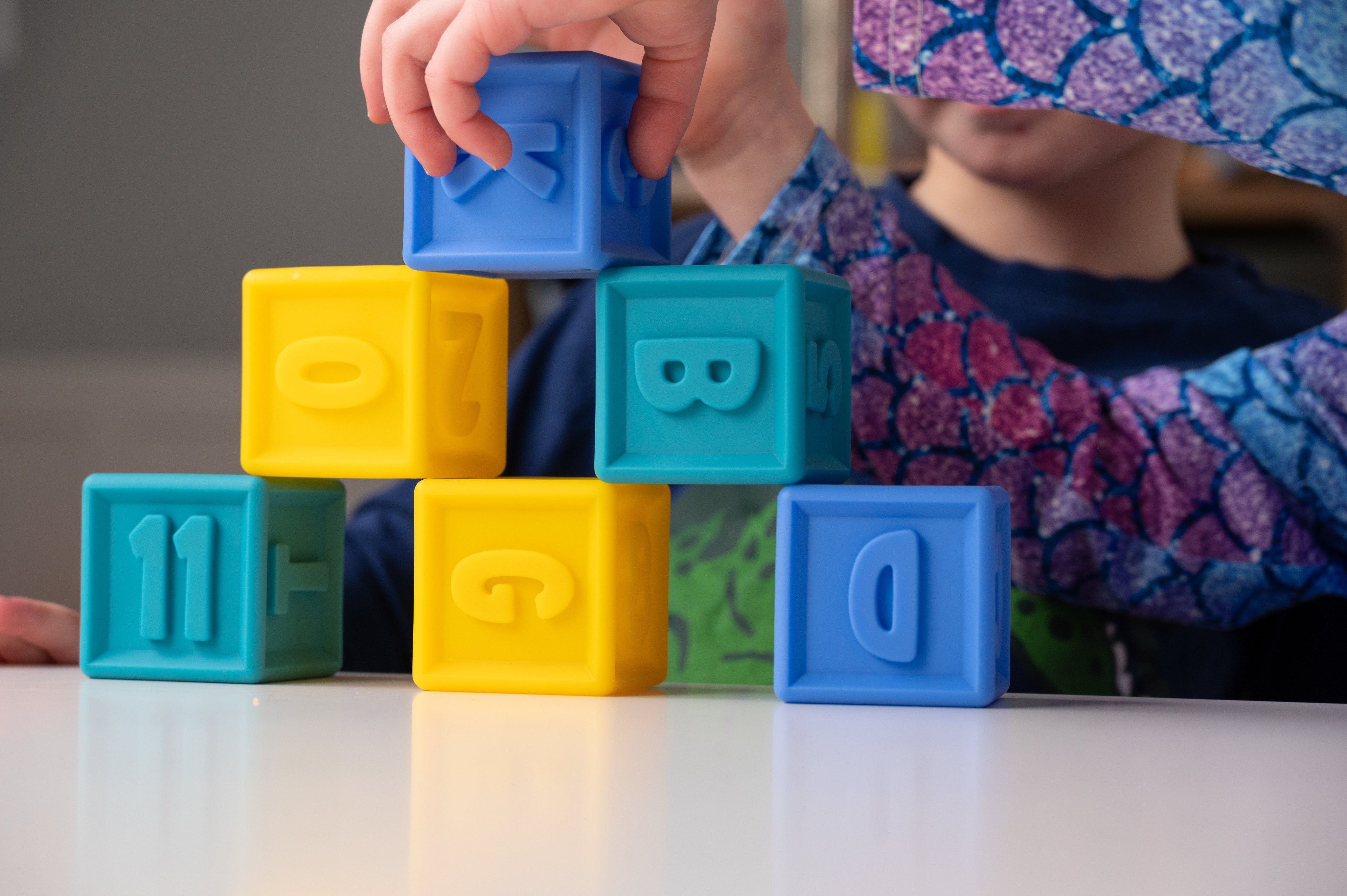Little Fingers, Big Dreams: Nurturing Fine Motor Skills in Kids

Written by Cali @chasing50toes
Squeeze it, stack it, knock it over! We love our D&J Squeeze and Stack blocks for so many reasons but especially because your child’s physical, cognitive and emotional development are blossoming and all they’ve done is play. That’s right! Those teeny-tiny movements that are made with your child’s hands and fingers are integral to their development. The fancy term for such movements is called “fine motor movement” and they lead the way to invaluable life skills. So what exactly are fine motor skills and why are they such a big deal? Glad you asked!
Children tend to develop various fine motor skills at different stages. Commonly, in early infancy babies learn to grasp objects and to bring them to their mouths for oral exploration. As they grow, they refine their movements and gain more control over the muscles of their hands and fingers. Such control makes it possible to release, manipulate, use both hands in coordination with one another to perform tasks, and to coordinate visual and hand information for optimal hand-eye coordination. The best way to get your child to be able to do all the intricacies of fine motor movements? Put them in front of many everyday activities involving their hands!
Some of our favorite activities at D&J that foster fine motor skills include the following:
-
Grasping: Set out D&J Squeeze and Stack Blocks on the floor, place silicone ABC or 123 Letters and Numbers for your little learner to hold and explore. Model squeezing playdough into various shapes and animals on top of your D&J Into The Woods Placemat, or use tweezers of various sizes to practice picking up small objects!
-
Releasing: There are so many easy activities to do to expose your child to the fine motor skill of “letting go” (haha, but have we learned this mental art form as an adult? Anyone? Elsa?) Grab the D&J Bag Of Chips, dump ‘em out and have your child pick them up and release them into the bag they came in. Best game ever! Another idea is to have your child drop objects they pick up with tweezers into containers or play games like "Hot Potato” to mix up the fun!
-
Manipulation: Grab your D&J Find and Fit Puzzles to play or make necklaces and string beads onto your child’s favorite string color. Have a sensory wall with various gadgets to practice turning, sliding and pulling? Those are perfect for practicing fine motor manipulation.

-
Bilateral coordination: We’re fans of doing anything outside, and there is no better way to work on bilateral coordination than a simple game of playing catch! Those infamous sensory bins you see around Pinterest and social media that are always being pushed (and for good reason)? Take one outside and let your kids practice manipulating the various objects within the bin or even outside in a big wet pile of mud! Not ready for activities just yet? Simple clapping games are a great starting point.
-
Hand-eye coordination: Many enjoyable activities require hand-eye coordination including tracing fun with our D&J Alphabet Placemat, lining the D&J counting chips up on the balls of our Counting Mat or a simple coloring page and crayons activity. Other activities that target hand-eye coordination include using a hammer and nails or merely playing a game of baseball or basketball together.

Remember, providing opportunities for your child to practice and refine their fine motor skills is highly beneficial in helping them grow into confident and independent adults. Like anything in life, the more you practice, the better you get!
Let’s Chat Delayed Fine Motor Skills
Sometimes, though, it’s not as easy as providing opportunities to strengthen fine motor skills and professional help might be needed. Don’t panic (okay, how many of you just did?), but also don’t ignore them:
-
Dropping utensils or struggling to hold objects
-
Scribbles that look more like chicken scratch than letters or drawings
-
Avoiding arts and crafts or other activities that require precision and control
-
Complaining about hand or wrist pain during fine motor tasks
-
Tripping or stumbling frequently, or struggling with balance
-
Late to crawl, walk, or achieve other major motor milestones
-
Showing little interest in toys or games that involve small movements, like building with blocks or puzzles
We cannot stress this enough, it is okay if your child develops fine motor skills at their own pace and isn’t hitting every documented milestone mark exactly on time. It’s also worth mentioning, around 87% of autistic children and adults have some sort of motoric difficulty, including fine motor. Different brains make for different pathways in development. While we don’t want you getting stressed about those milestones that are dangled all over the internet and at every doctor’s office, we want you to know if you have concerns, please seek out answers with your pediatrician and/or an occupational therapist.
Remember, early intervention is amazing for helping your child overcome developmental delays and thrive in their everyday activities. With the right support and resources, your child can reach their full potential and achieve big dreams. We’re here to cheer you on and to let you know you don’t have to do anything alone!
And you don’t! We know we’re an educational toy brand, but we also know we are so much more and that there is a very real community and camaraderie that is embedded in D & J. We are learning together, through play, all in the name of the love we have for our kids. So tackle the fine motor movements by intentionally incorporating some of the activities above, yes, but smile knowing we’re all in this together!

